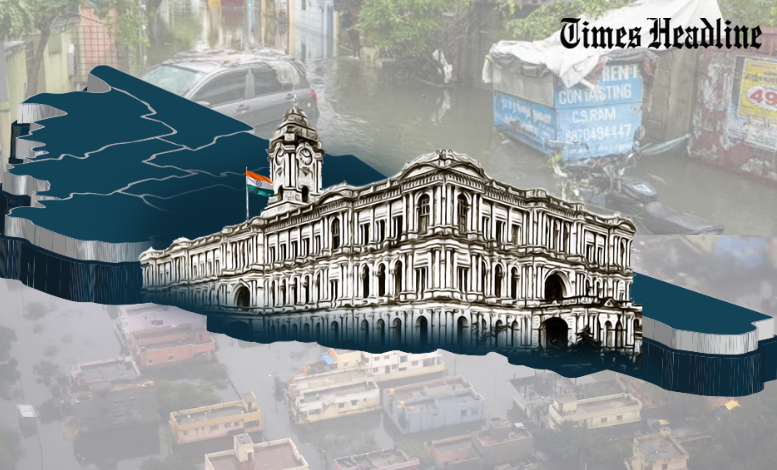By Priyanshi Jain
The city of Chennai, located on the southeastern coast of India, is no stranger to heavy monsoon rains. However, in recent years, the city has been facing an unprecedented challenge – frequent and severe flooding. The devastating floods that hit Chennai in December 2015 left the city paralyzed, causing immense loss of life and property. In this article, we will delve into the causes of the floods, the government’s response, and the long-term implications for the city.
Causes of the Floods
Deforestation:
– Rampant deforestation in and around Chennai resulted in reduced green cover, leaving the soil vulnerable to erosion
– As a result, the land’s ability to absorb rainfall diminished significantly.
Excessive Rainfall:
– Chennai receives an average annual rainfall of around 140 cm, but during the 2015 floods, it experienced a record-breaking downpour of over 345 cm
– The heavy rainfall was attributed to the northeast monsoon, which was intensified by a low-pressure system in the Bay of Bengal.
Encroachments on Water Bodies:
– Unregulated construction on lake beds and encroachment of water bodies reduced their capacity to hold excess rainwater
– This led to the rapid overflow of water, flooding nearby areas.
Government Response
Rescue and Relief Operations:
-The government swiftly mobilized resources to rescue stranded citizens and provide relief measures
-National Disaster Response Force (NDRF) teams were deployed to assist in rescue operations.
Restoration and Reconstruction:
-The government initiated efforts to restore damaged infrastructure, including roads and bridges
-Financial assistance was provided to affected families and businesses for rebuilding their lives.
Evacuation and Rehabilitation:
– Thousands of people were evacuated from low-lying areas and provided with temporary shelters
-The government set up relief camps and distributed essential supplies to affected individuals.
Long-term Measures:
– Urban planning authorities initiated measures to prevent encroachments on water bodies and enforce stricter regulations
– Afforestation drives and initiatives to restore the city’s green cover were undertaken to mitigate future flooding risks.
Economic Consequences
Business Shutdowns:
– Numerous businesses, both large and small, were forced to shut down temporarily or permanently due to the devastation
– The loss of income and employment opportunities had a severe impact on the livelihoods of many individuals.
Damage to Agriculture:
– The floods caused extensive damage to agricultural lands and crops, affecting the livelihoods of farmers
– Several hectares of farmland were inundated, leading to significant economic losses in the agricultural sector.
Conclusion
The Chennai floods of 2015 left an indelible mark on the city, highlighting the need for proactive measures to prevent such disasters. The catastrophic effects of the floods served as a wake-up call for better urban planning, improved infrastructure, and sustainable development practices. By learning from this tragedy, Chennai can strive towards a more resilient future, ensuring the safety and well-being of its residents.

